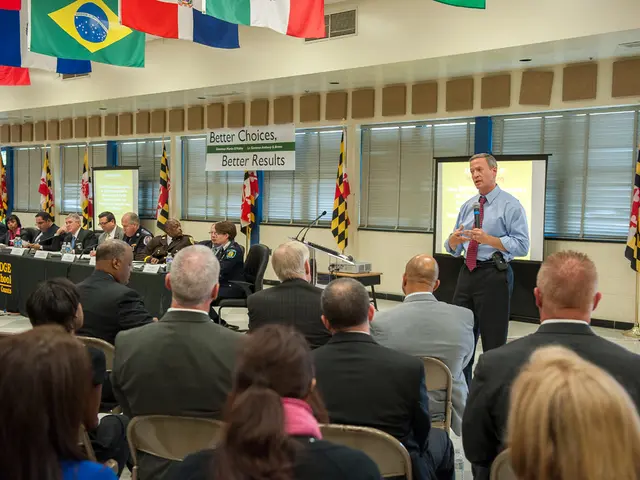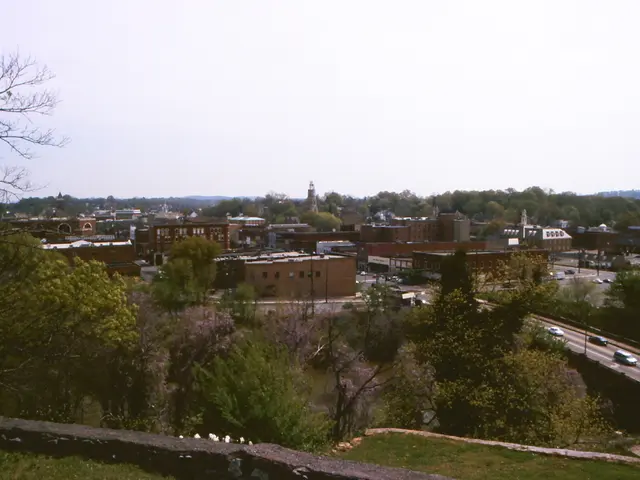They were unable to compose their own text.
Generous Merchants of Biysk: Philanthropy in Siberia's Heart
The turn of the century in Biysk, Siberia, was a time of philanthropic prosperity, with merchants eager to lend their accumulated wealth to worthy causes. Led by the Moscow merchants, this spirit of giving flourished, and Biysk's merchants aimed to keep up. Most donations were directed towards education, a testament to the merchants' commitment to their community's development.
Why Give? Motives of Unschooled Patrons
Historians highlight diverse factors that fueled Biysk's philanthropic spirit. Some merchants aspired to attain the prestigious title of honorary citizen, a rank akin to nobility achievable through lucrative trade and philanthropy. Others served in local government, where philanthropy was seen as a means to address local issues. Lastly, Orthodox Christian ethics played a significant role, with merchants often devout and viewing charity as crucial to their faith.
However, an interesting observation is the illiteracy of many patrons. Local history scholar Dmitri Eroshkin notes that several generous donors could not read or write themselves. Elena Grigorievna Morozova frequently donated large sums for school construction and development in Biysk, despite her inability to read or write. Similarly, many merchants involved in trading with Mongolia had limited or no formal education.
Education Advocates and Church Supporters
Despite their own educational shortcomings, these merchants actively supported education in Biysk. Merchant Mikhail Sychov, who served as mayor from 1895 to 1902, was instrumental in constructing and maintaining schools. His donations for the needs of education, churches, and healthcare totaled over 56,000 rubles from 1876 to 1904.
Nikolai Ivanovich Assanov, who succeeded Sychov as chairman of the Biyaskaya women's gymnasium, also made substantial contributions to the institution. His donations amounted to 25,000 rubles from 1896 to 1913. He also supported the men's gymnasium and financed excursions for the gymnasts, including one to the Altai Mountains in 1912.
The Morozovs were known for their generous donations, building the most beautiful Holy Trinity Cathedral in Biysk and fostering the Nikolaevskaya men's poorhouse. Nikolai Firsov was celebrated for his annual donations to the women's progymnasium and the maintenance of a poorhouse at his own expense. Yakov Alekseevich Sakharov funded the Alexandro-Nevskaya church-parish school building and maintained it, while also promoting the cultivation of fruit orchards in rural schools in the Biysk district.
Charitable Inheritance and the People's House
Anton Petrovich Kopylov donated 200,000 rubles for the construction of the People's House in Biysk. The building hosted a drama theater, public library, labor exchange, Sunday school for adults, and a city public bank. The rules of the bank stipulated that all profits were to be used exclusively for charitable, educational, and cultural purposes.
Beyond Their Own: Merchants' Enduring Legacy
The merchants of Biysk extended their generosity beyond their personal riches. For instance, Rzhedstvensky contributed funds for the construction of a public assembly building, Vlas Ryabkov donated for a church bell and the repair of the bell tower, and built and maintained a poorhouse at the church.
These merchants made significant contributions to local charities, smallpox vaccination initiatives, and even supported institutions in other cities like Tomsk. Their philanthropic donations often far eclipsed their educational attainments, further highlighting their commitment to the betterment of their communities.
- The merchants of Biysk not only generously supported education, but also exhibited an interest in other aspects of their community's lifestyle, demonstrated by their contributions to fashion-and-beauty, food-and-drink, home-and-garden, and relationships.
- Some merchants, despite their illiteracy, were passionate about shopping and even funded the construction of shopping centers and markets, contributing to the local economy.
- many merchants, besides their commitments to education and community development, showed affection for pets by funding animal shelters and hospitals, ensuring the well-being of these beloved creatures.
- The merchants' generosity extended to travel, as they sponsored excursions for students and local residents, such as the gymnasts' trip to the Altai Mountains in 1912.
- In the realm of career-development, the merchants funded vocational schools and apprenticeship programs, providing opportunities for skills acquisition.
- For personal-growth and self-development, the merchants supported libraries and educational institutions, offering easy access to resources for self-education and improvement.








